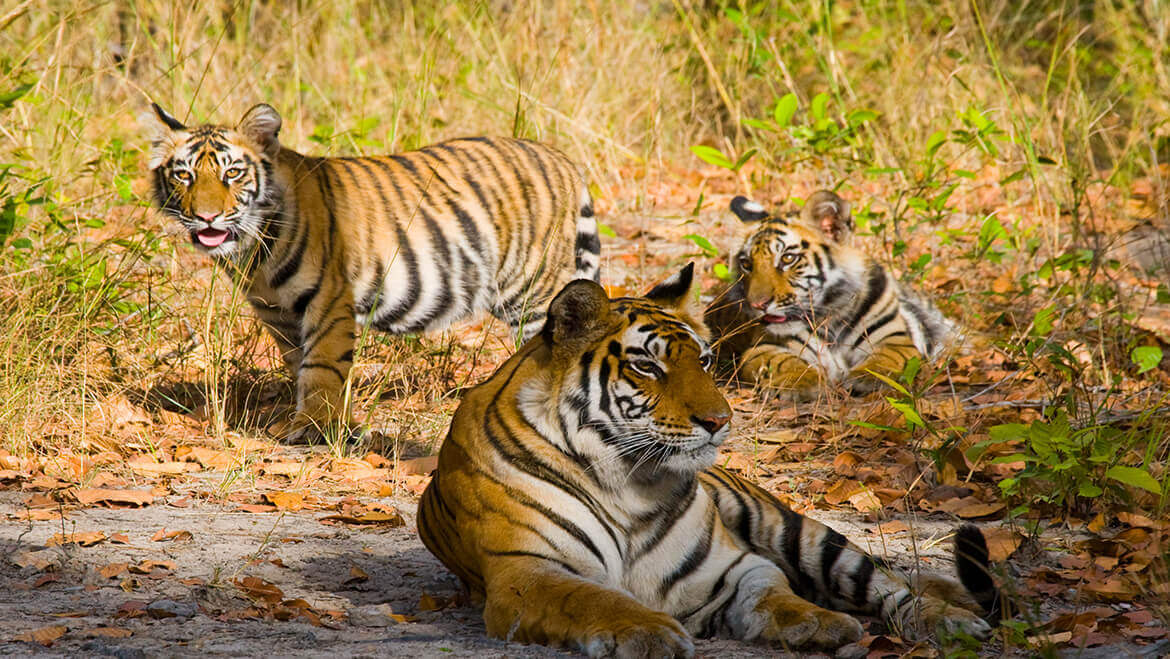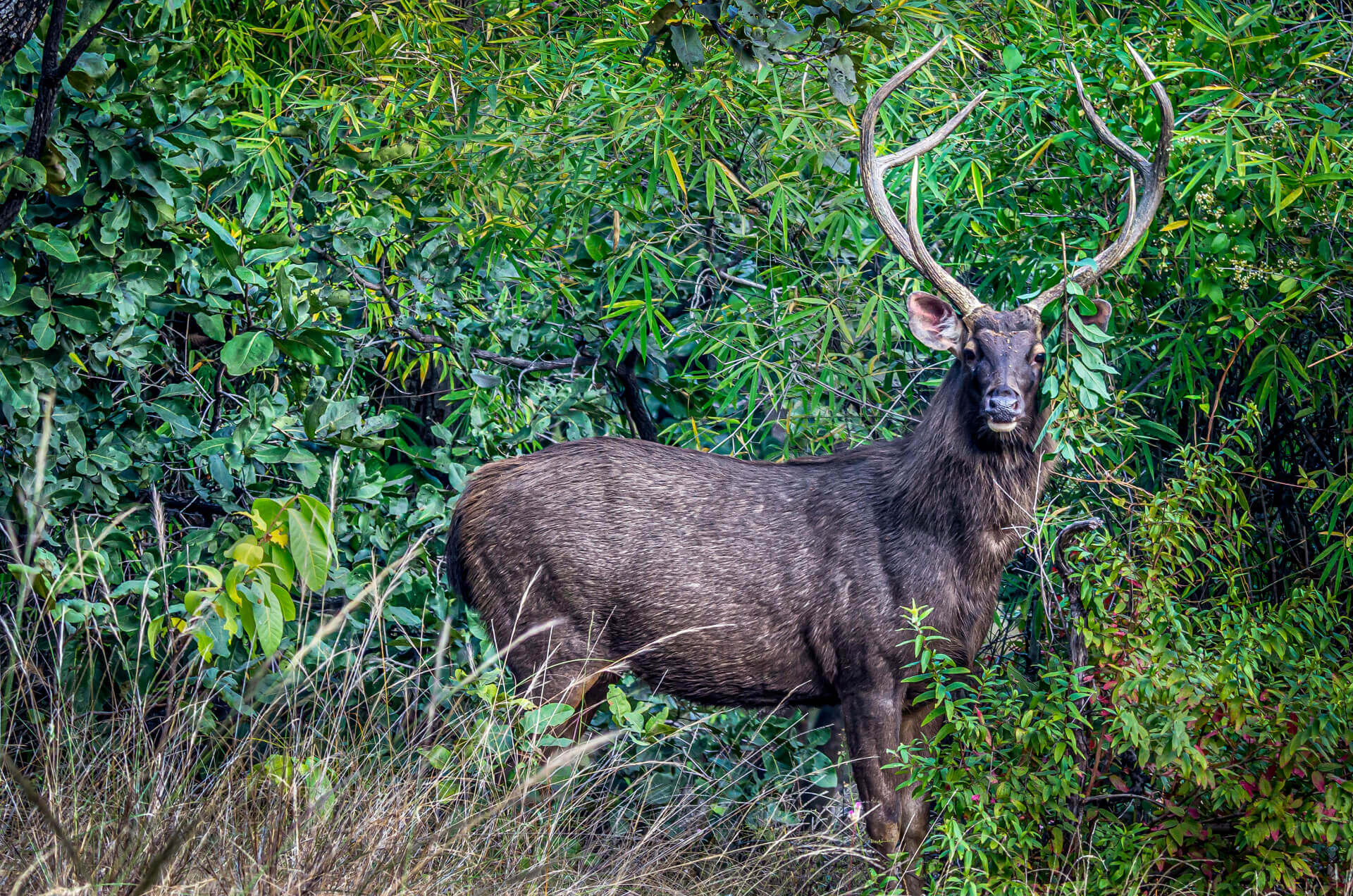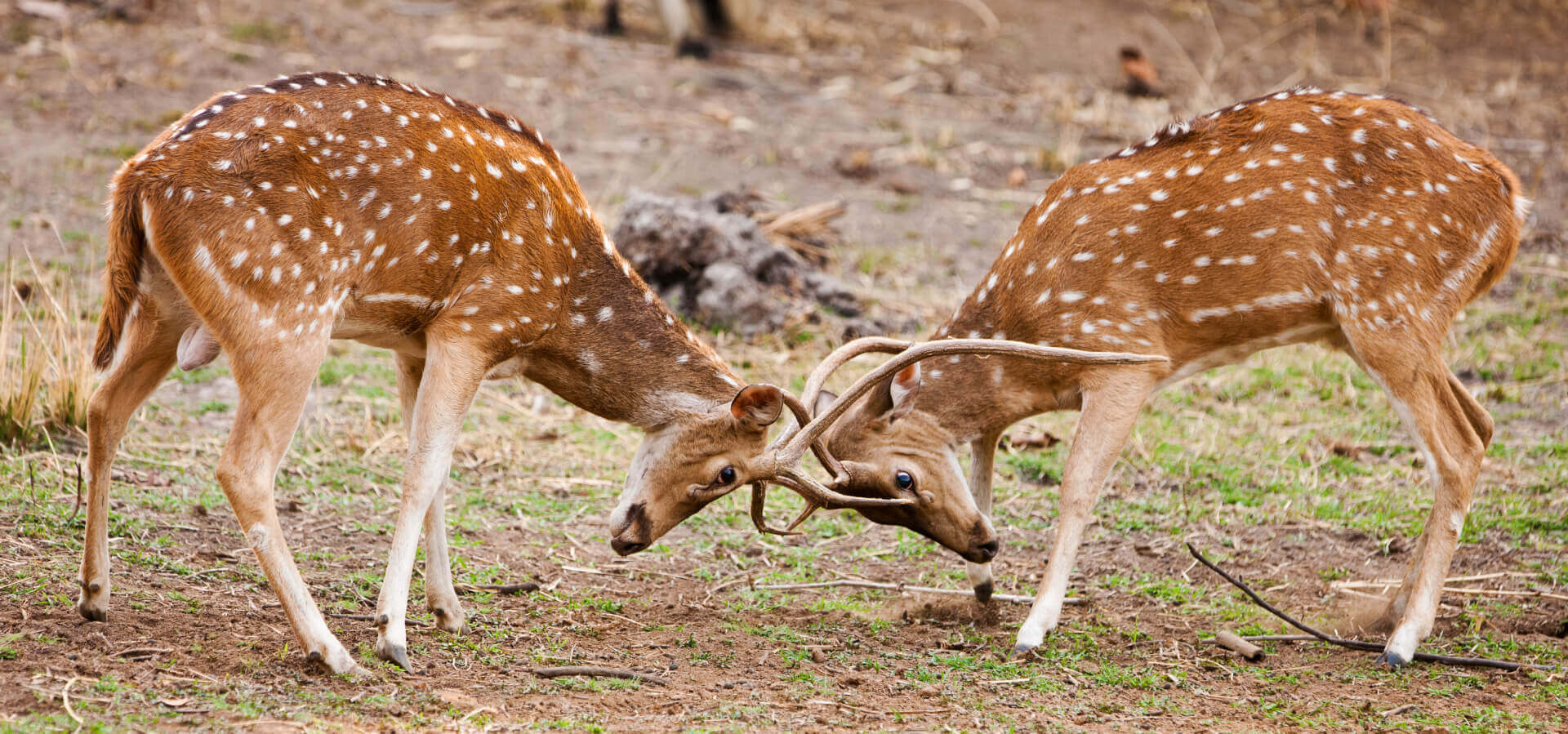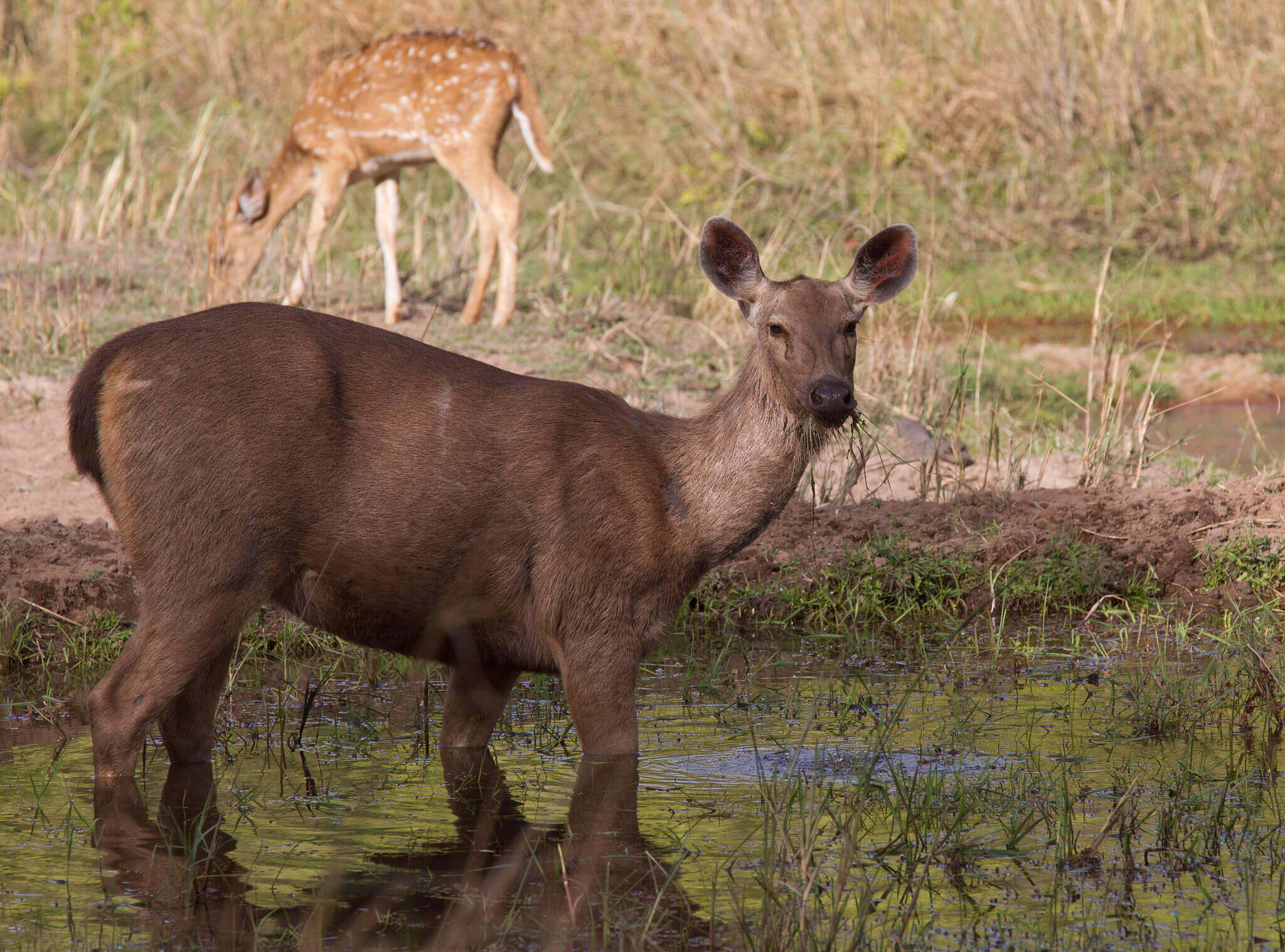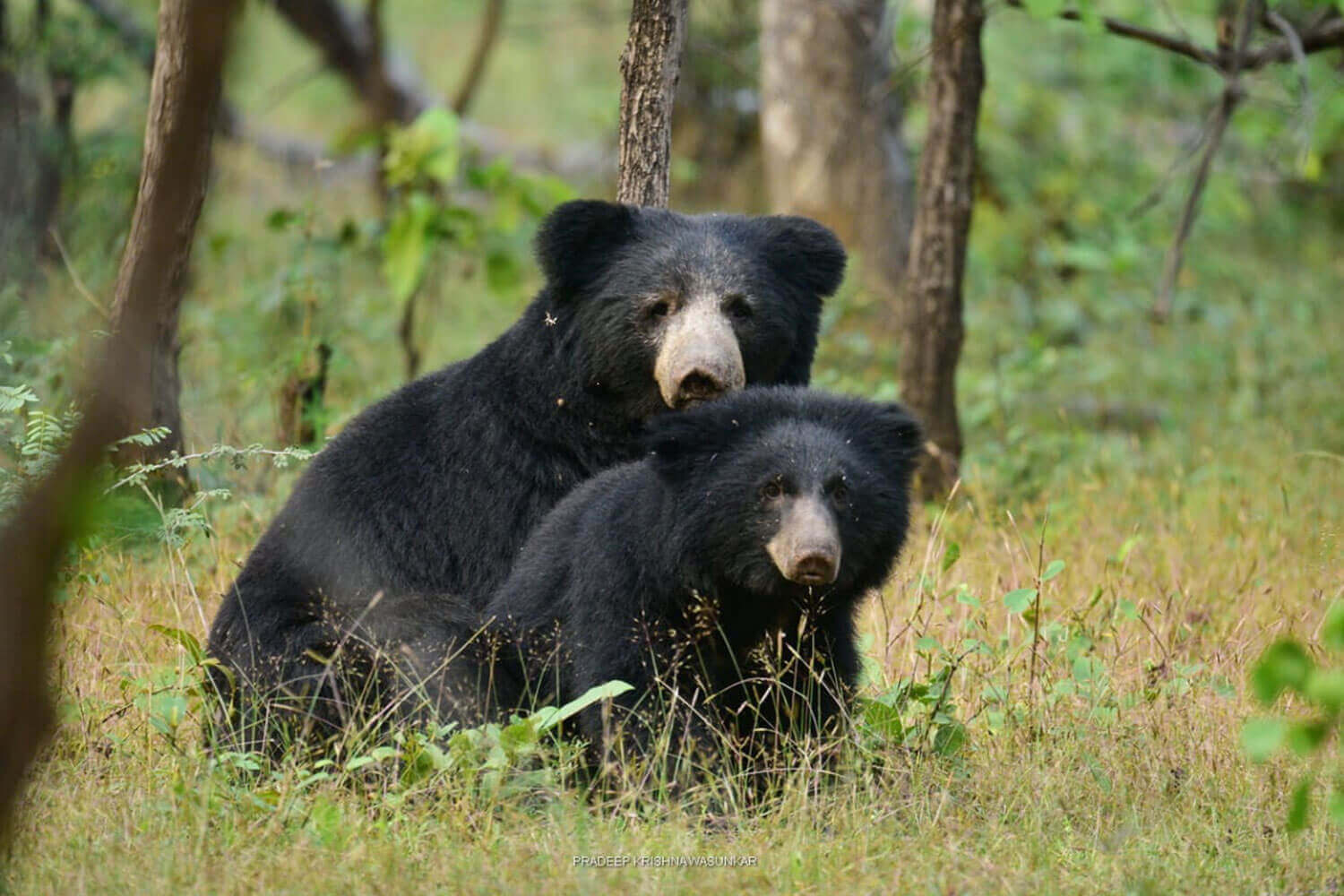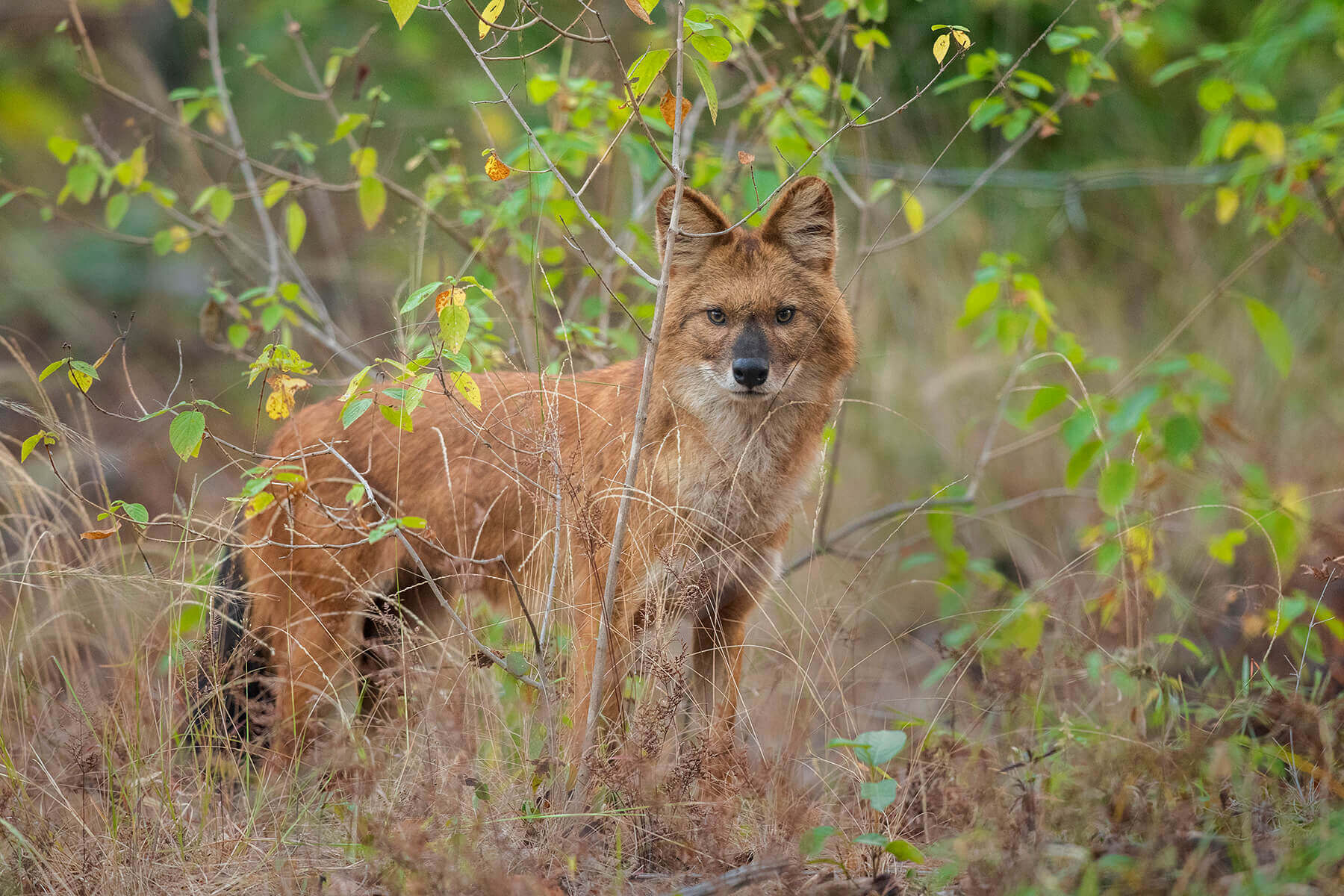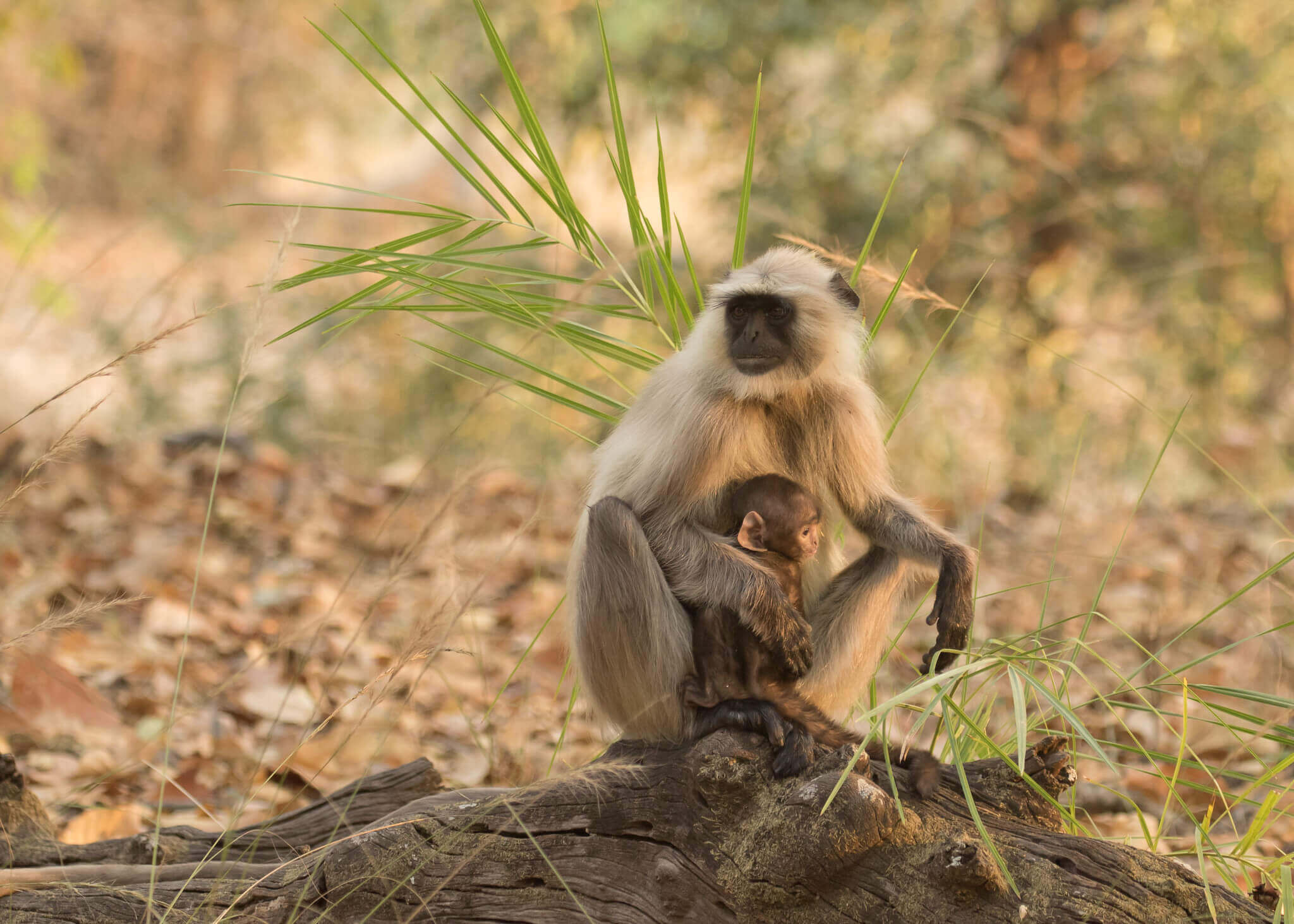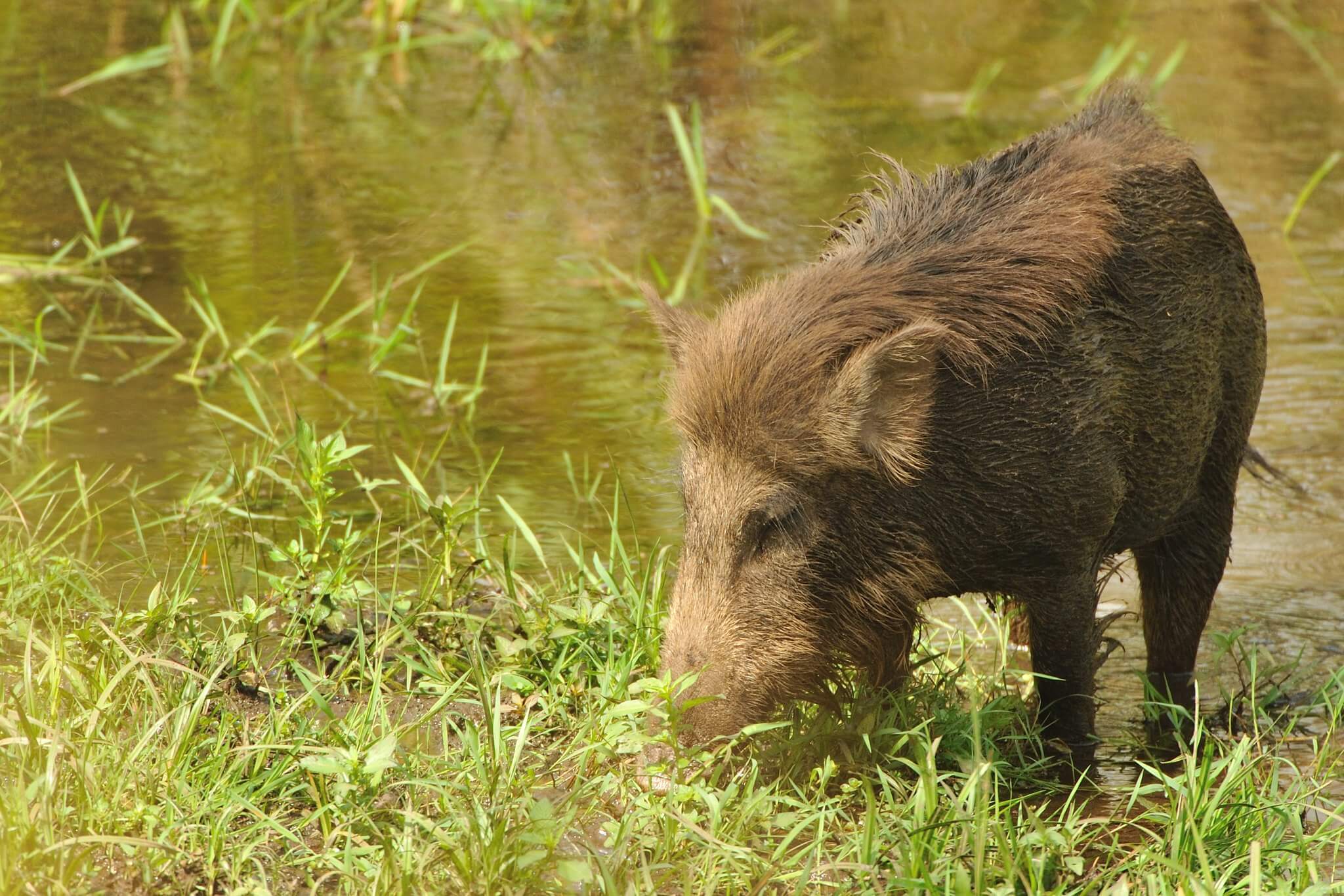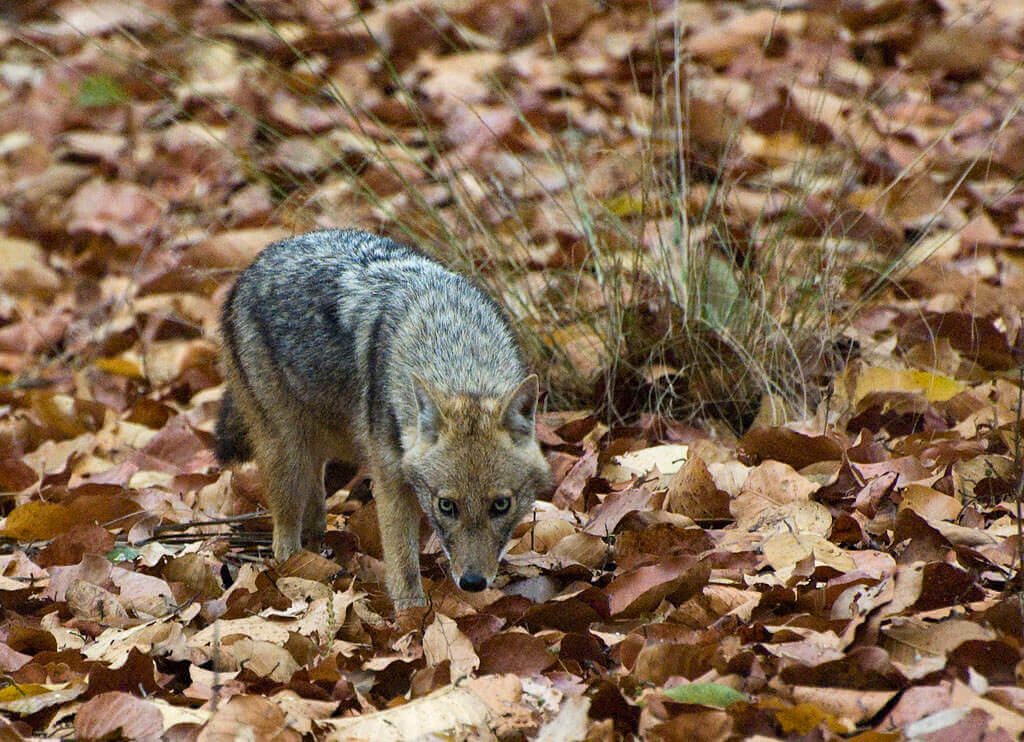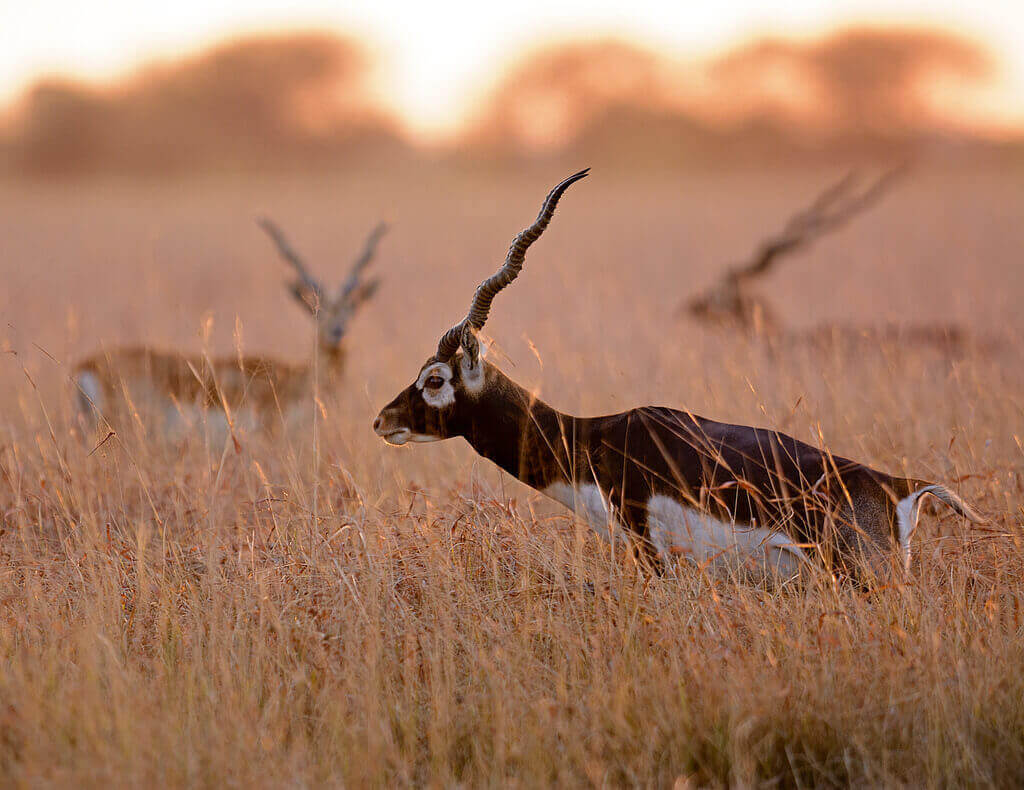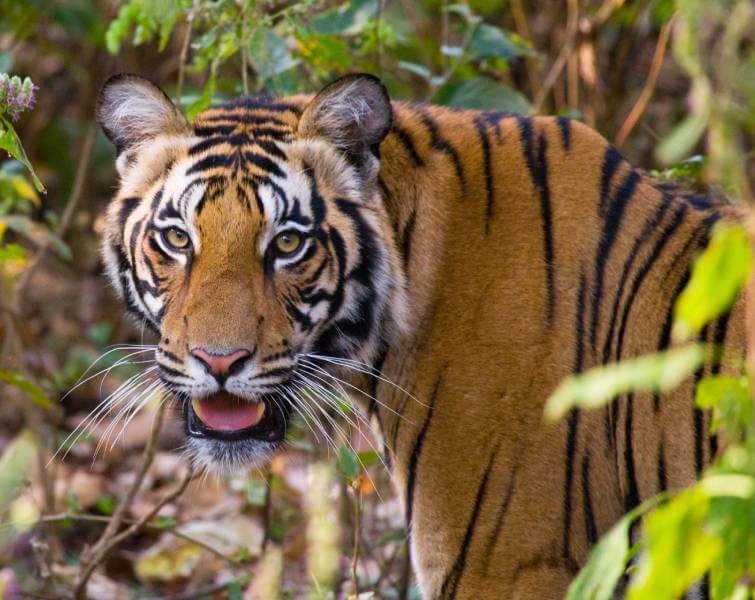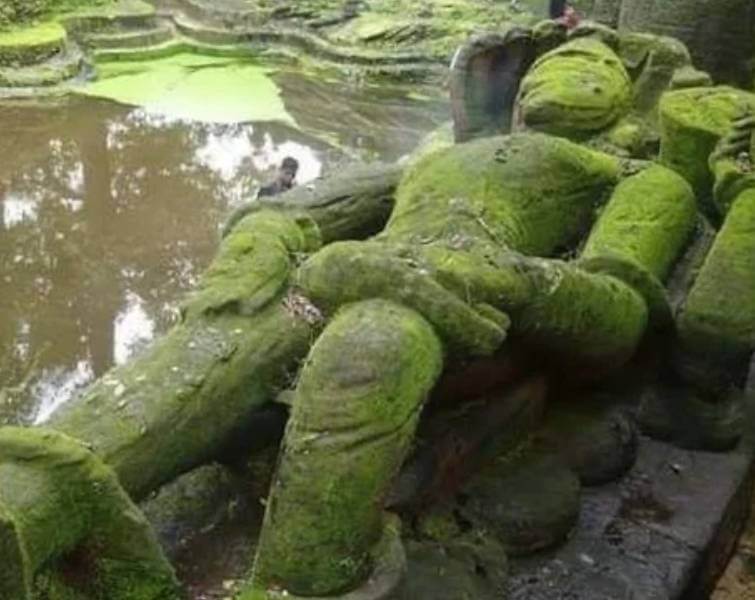Popular Wildlife Animals in
Bandhavgarh National Park
The tropical and deciduous forests of Bandhavgarh National Park is filled with a number of wildlife species. You will be able to witness the sparkling eyes of many wildlife present in these dense woods. This national park possesses a number of varieties of species including royal Bengal Tigers, Leopards, different species of Deer, Chital, Wild Boars, Herbivores and many more.
Tigers (Panthera Tigris)
Bengal Tigers are the main attraction in Bandhavgarh National Park. In total fauna inhabitants, tigers possess a big portion of the wildlife. As the park is known for the density of tigers, a number of animal enthusiasts from all over the world come here to witness these wild cats. One of the most famous tigress was Charger, who was famous for her aggressive nature.
Leopard (Panthera Pardus)
With white skin and black botches, leopards are known for their flexibility. They can sneak and appear before their prey without being spotted. Although they are mainly found in main core regions, there are many people who were lucky enough to see them in buffer zones too. Their physique is comparatively smaller than tigers. They can be fatal for living beings including humans.
Swamp Deer (Rucervus Duvaucelii)
These yellowish-brown deer with shaggy furs are found in core zones, where the woodlands are densest. They stay somewhere near water sources in herds. They usually communicate through scent marking, and by making high-pitched grunts. If you are lucky enough you might get a chance to see their territorial battles, where they use their unique antlers.
Elephant (Elephantidae)
As we all know, elephants are the largest mammals on the earth with big trunks and ears. They are usually found in sub-Saharan Africa and the southern part of Asia. females lives with their children and males leave their groups when they are adult to wander alone. You might find some male elephants with other male elephants.
Chital (Cervus Axis)
Chital, also known as Axis Deer and Spotted Deer, mainly found in the Indian subcontinent. It plays an important role in the cycle of the ecosystem. In Bandhavgarh, Chital are the primary food source for leopards and tigers. Their sizes differ from males to females, males are stronger and bigger than females. And antlers are present on males only, their little furs are usually covered in small white spots.
Swamp Deer (Rucervus Duvaucelii)
These yellowish-brown deer with shaggy furs are found in core zones, where the woodlands are densest. They stay somewhere near water sources in herds. They usually communicate through scent marking, and by making high-pitched grunts. If you are lucky enough you might get a chance to see their territorial battles, where they use their unique antlers.
Sloth Bear (Melursus Ursinus)
Sloth bear is one of the rarest animals on this earth. You will be able to find them in Bandhavgarh National Park. you might have guessed by its name that he looks like a sloth + bear. With long fuzzy furs and a big lower lip, it is also called a led labiated bear. They usually give birth during winter and they are dependent on vegetation for their survival.
Barking Deer (Muntiacus)
Barking deer also known as Indian Muntjac are smaller than any other deer species. They prefer settling near water bodies and are good swimmers. Like other deers, males are bigger than females with canines and small antlers. You will be able to detect their presence because of the strong scent they produce to mark their territory. They bark like dogs when getting disturbed or alarmed by any interference and that is why we call them Barking Deer.
Wild Dogs (Lycaon Pictus)
Indian Wild Dogs also known as Dhole are highly social and active animals. They are usually found in Asithe in the central Indian mountains. They don’t bark like other dogs; they communicate through whistling. They might seem familiar and lenient but they have a rigid dominating nature. If you see any wild dog hunting and eating their prey alive, then don’t be surprised, they prefer to have their meal when it’s alive and counting their last breath.
Common Langur (Semnopithecus Entellus)
Common Langur also known as Gray Langur is usually found in rural areas. India is a hub of these Langurs mainly because of the ideal woodlands and climate conditions. They have yellowish-grey furs with small black faces and ears. The body size of this animal differs with the sex, males are mostly bigger than females. They are human-friendly animals.
Wild Boar (Sus Scrofa)
Wild Boars mainly live in hills, but they come down near farmlands and grasslands in search of small prey and water. They live in groups or herds, consisting of around 40-50 wild boars. Females live with their cubs and sub-adult males in groups and males usually live alone with 2-3 other males. Females are smaller and weaker than male boars, that’s the reason they usually stay in their herds for better protection.
Nilgai (Boselaphus Tragocamelus)
Nilgais are usually found in northern Indian subcontinents. If you are planning on visiting Bandhavgarh, you will be able to witness a number of nilgais in groups with their calves. Generally timid and tame by nature, they can flee up to 800 m to escape from danger. They are herbivorous animals and usually prefer eating grass and woody plants. Tigers face a hard time preying on them.
Asiatic Jackal (Canis Aureus)
Asiatic Jackal, also known as Golden Jackal and Common Jackal looks like a wolf from a distance. They have shorter legs and a less prominent head structure than Arabian jackals. They are usually found on the European side and studies show that they were expanded from India to other parts of Asia.
Black Buck (Antilope Cervicapra)
Also known as Indian antelope, Blackbuck are usually found in Nepal and India. You will be able to see them in the grassy plains of Bandhavgarh National Park. Like other animals in the park, males are bigger and stronger than females who weight around 33 kgs. You will be able to see them in broad daylight as they hide during night.
